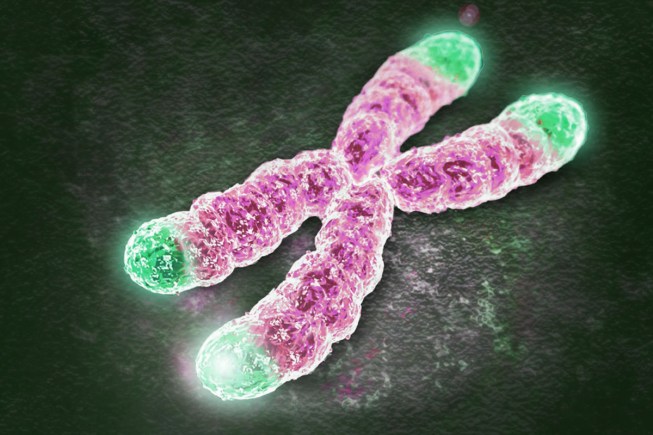Gene Therapy
If early data is accurate, the world’s first successful example of telomere lengthening via gene therapy in a human individual has been undertaken. The gene therapy was completed on BioViva CEO Elizabeth Parrish.
Elizabeth Parrish, CEO of BioViva USA Inc. has become the first human being to be successfully rejuvenated by gene therapy, after her own company’s experimental therapies reversed 20 years of normal telomere shortening.
Related articles
Telomere score is calculated according to telomere length of white blood cells (T-lymphocytes). This result is based on the average T-lymphocyte telomere length compared to the American population at the same age range. The higher the telomere score, the “younger” the cells.In September 2015, then 44 year-old Parrish received two of her own company’s experimental gene therapies: one to protect against loss of muscle mass with age, another to battle stem cell depletion responsible for diverse age-related diseases and infirmities.
The treatment was originally intended to demonstrate the safety of the latest generation of the therapies. But if early data is accurate, it is already the world’s first successful example of telomere lengthening via gene therapy in a human individual. Gene therapy has been used to lengthen telomeres before in cultured cells and in mice, but never in a human patient.
Telomeres are short segments of DNA which cap the ends of every chromosome, acting as ‘buffers’ against wear and tear. They shorten with every cell division, eventually getting too short to protect the chromosome, causing the cell to malfunction and the body to age.
In September 2015, telomere data taken from Parrish’s white blood cells by SpectraCell‘s specialised clinical testing laboratory in Houston, Texas, immediately before therapies were administered, revealed that Parrish’s telomeres were unusually short for her age, leaving her vulnerable to age-associated diseases earlier in life.
In March 2016, the same tests were taken again by SpectraCell revealed that her telomeres had lengthened by approximately 20 years, from 6.71kb to 7.33kb. This implies that Parrish’s white blood cells (leukocytes) have become biologically younger. These findings were independently verified by the Brussels-based non-profit HEALES (HEalthy Life Extension Company), and the Biogerontology Research Foundation, a UK-based charity committed to combating age-related diseases.
"BioViva has the potential to create breakthroughs in human gene therapy research, while leapfrogging companies in the biotech market."
Parrish’s reaction: “Current therapeutics offer only marginal benefits for people suffering from diseases of aging. Additionally, lifestyle modification has limited impact for treating these diseases. Advances in biotechnology is the best solution, and if these results are anywhere near accurate, we’ve made history”, Parrish said.Bioviva will continue to monitor Parrish’s blood for months and years to come. Meanwhile, BioViva will be testing new gene therapies and combination gene therapies to restore age related damage. It remains to be seen whether the success in leukocytes can expanded to other tissues and organs, and repeated in future patients. For now all the answers lie in the cells of Elizabeth Parrish, ‘patient zero’ of restorative gene therapy.
Since her first gene therapy injections BioViva has received global interest from both the scientific and investment communities. Earlier this month BioViva became a portfolio company of Deep Knowledge Life Sciences (DKLS), a London-based investment fund which aims to accelerate the development of biotechnologies for healthy longevity.
Dmitry Kaminskiy, founding partner of DKLS, said “BioViva has the potential to create breakthroughs in human gene therapy research, while leapfrogging companies in the biotech market.”





0 comments:
Post a Comment